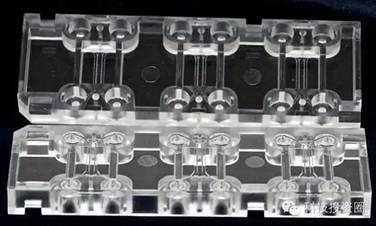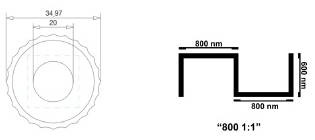The cells interact with the surrounding extracellular matrix and other cells in a three-dimensional environment and receive various signals to guide their proliferation, differentiation or migration. Under the two-dimensional culture system, the behavior of cells is significantly different from the behavior under physiological conditions in vivo. Many physiological indicators are significantly different, such as the length of proliferation, the effect of drugs on the cells. In recent years, more and more evidences show that three-dimensional cell culture is closer to the physiological environment in vivo than two-dimensional culture, which provides conditions for us to more accurately understand the cellular behavior and physiological regulation mechanism in vivo. It is foreseeable that in the future, 3D training will gradually break through and become more mature and perfect in terms of high throughput, automation, low cost, wide applicability and high predictability. The transformation of 2D training to 3D will become an inevitable development trend and trend of the times.
There are many types of 3D culture systems currently on the market, and there are two types of support (scaffold) materials depending on whether the product is a cell or not: a scaffold-based culture system and a scaffold-free culture system. Scaffold is divided into natural and synthetic ingredients. So how do we choose the 3D culture system that suits you best? It depends on our experimental needs, for example, the cell type of the experiment, the experimental design, the scale of the experiment, whether it is co-cultured, the type of analysis, whether cells are collected for analysis, the required flux, and possible clinical use, etc. Decisive factor.
Currently, there are stented systems such as 3D Biomatrix's Perfecta3D ® hanging drop plate, InfiniteBio's SCIVAX 3D Nano Culture® Plate; the unsupported 3D culture system is Microtissues and Nano3D Biosciences. Microtissues offers a 3D Petri Dish® system made from agarose, and Nano3D Biosciences' Bio-AssemblerTM1 uses magnetic suspension technology.
Pree McGrady is advancing with the times, not only to provide NSB's ANFS series of 3D culture dishes, but also to provide AIM's unsupported 3D cell culture chips.
AIM is based on a microfluidic technology designed 3D cell culture chip . The microfluidic device has a set of culture groups. Each culture group has three culture chambers, the middle is used for any type of cells and hydrogels, and the other two are used to culture additional Cell. Allows researchers to simultaneously culture multiple cells in a three-dimensional hydrogel environment that mimics natural tissue. The hydrogel culture chamber has openings on each side so cells can interact as if they were in a living body. Cancer drugs and other agents can be added to these culture chambers to observe the response of cells in the human body.
Roger Kamm, a professor of mechanical engineering and bioprocesses at the Massachusetts Institute of Technology, explains that the biggest benefit of this device is that it allows researchers to better study biological processes, such as cancer metastasis, and allows them to more accurately capture cancer cells for chemotherapy. The reaction of the drug.

According to Kamm, systems designed for three-dimensional cell culture by other companies include deep culture dishes filled with hydrogel, and because of the distance between these deep culture dishes and the microscope, it is difficult to take high-resolution images. But AIM Biotech's instrument can be placed directly under the microscope like a traditional culture dish, which is very beneficial for imaging.

This image shows how endothelial cells line up in a 2-dimensional medium trough that forms a "wall" along the vertical collagen surface. The nucleus of the endothelial cells is purple, and the intercellular adhesion agent vascular endothelial cell cadherin is green. Image source: MIT researchers. The researchers said: "With this instrument, you can shoot within 200 microns on the cover sheet, so you can get high-resolution real-time pictures and movies."
The ANFS series 3D culture dish is designed by NSB exclusively for the topological structure "800nm ​​1:1". The non-uniform nano-scale groove structure provides the culture dish with a physiological environment similar to the body, especially for the myocardium. Culture of cells.

Application summary
Vascular regeneration
Cancer cell metastasis
Cell invasion, migration
Construction of disease model
Drug screening
Scientific research
The future of 3D cell culture
There is considerable experimental evidence to confirm that although 3D cell culture is not exactly the same as the in vivo environment, it is clearly closer to the in vivo conditions than traditional 2D cell culture. Further analysis of the results obtained from previous 2D cell experiments in the 3D culture system will become a hot research topic in the future. “Our past 2D cell experiments have yielded many valuable results, and it is time to further deepen these studies,†Schrader said. "Promoting 2D in vitro experiments to the level of the 3D cell system will greatly speed up the introduction of new drugs to the market and reduce the cost of drug development."
shockwave therapy,electromagnetic therapy machine,shock therapy machine,light wave therapy machine,electromagnetic wave therapy
Shenzhen Guangyang Zhongkang Technology Co., Ltd. , https://www.nirlighttherapy.com